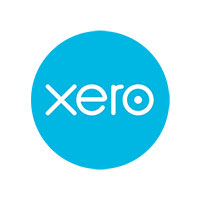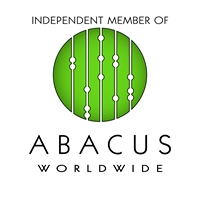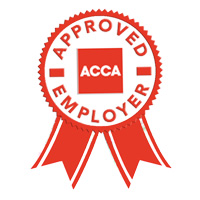
Introduction
The headlines, and much of the talk, in the popular press is of the ‘U turn’ on tax credits. And yet George Osborne has managed to stick to his goal of a £10bn surplus by the end of this parliament, by re-working where the cuts fall and where the additional revenue is raised, aided by more favourable forecasts from the Office for Budgetary Responsibility on government borrowing through to 2020/21.
Reversing the cuts in tax credits is estimated to cost £9.4bn over the next five years, on top of which there is planned additional capital spending of £11.9bn and a £5bn increase in welfare spending. This is in part financed by additional taxes, the apprenticeship levy, higher council taxes (for social care) and the additional stamp duty on buy to lets and second homes.
Property Investors
Stamp Duty Land Tax (SDLT)
Buy-to-let property investors remain at the top of the Government’s hit list. The Summer Budget announced a restriction on the deduction of interest from rental income for individual landlords of residential property. This restriction will be phased in from 2017/18 to 2020/21, and it may make letting uneconomic for landlords whose businesses are relatively highly geared.
Individual landlords who can buy properties to let without a mortgage are not affected by the interest restriction. To discourage such cash-rich individuals from purchasing multiple properties to let, or to hold as second homes, a supplemental SLDT charge of 3% will be payable by individual purchasers of residential properties worth over £40,000. This supplemental SDLT charge won’t be payable by corporate purchasers or by funds such as Real Estate Investment Trust (REITS) which make significant investments in let residential property.
SDLT is currently payable within 30 days of the completion of the purchase and the SDLT return must be filed within the same period. The Government is proposing to reduce the payment and filing period to just 14 days from the completion date of the sale, sometime in 2017/18.
SDLT does not apply in Scotland, as properties in that country are subject to Land and Buildings Transaction Tax (LBTT) which is set by the Scottish Parliament. The Scottish Budget will be delivered on 16 December 2015, when any new rates for LBTT for 2016/17 will be set.
Capital Gains Tax (CGT)
CGT is normally payable by individuals by 31 January after the end of the tax year in which the gain arose. This gives the taxpayer between 10 and 22 months to receive the proceeds, calculate the tax due and pay it over to HMRC.
From 6 April 2015 non-resident taxpayers have had a shorter time frame in which to report the sale of UK residential property and pay the tax due – only 30 days from the completion of the disposal. However, there are exceptions for non-residents who are registered with HMRC before they make the disposal.
HMRC has been pleased with how this 30-day reporting and payment time-frame is working out for non-resident taxpayers and now plans to extend it to all UK taxpayers who make taxable gains when selling residential properties. The change is expected to apply from 6 April 2019.
This advance payment of CGT won’t be simple to implement. Currently CGT can only be accurately calculated once all the taxpayer’s capital gains and losses for the tax year are realised. Losses must be set against gains, and the net amount is taxed at either 18% or 28%, depending on the taxpayer’s total income for the year. The government will allow CGT to be paid on a provisional basis to allow for these difficulties in calculation.
Annual Tax on Enveloped Dwellings (ATED)
The 2016/17 rates for the ATED were not announced in the Autumn Statement. However, we already know that a lower band for properties valued at £500,001 to £1 million will be imposed from 1 April 2016, and the charge for that band is likely to be £3,500.
The ATED is only payable where a residential property is held by a corporate structure, unit trust or partnership containing a company. There are numerous exceptions from the ATED charge for properties which are commercially let or used for specific purposes. Those exemptions are to be expanded to include properties included in equity release schemes from 1 April 2016.
Small businesses
Travel costs
In the Summer Budget it was proposed that tax relief for travel and subsistence costs incurred by temporary workers would be restricted where those workers were employed through an umbrella company, or employment intermediary, including a personal service company. This change in the tax rules would have caught many small companies who supply the services of the owner/director to work at their customers’ sites.
The Government has decided to go ahead with the restriction in tax relief for travel and subsistence expenses for employees in umbrella companies and other employment intermediaries from 6 April 2016. But employees of personal service companies will only be caught if the circumstances of the contract they are performing fall under the IR35 rules.
This will be a big relief to many IT contractors and those in other industry sectors, as the IR35 rules only apply where the contractor would be treated as an employee of his customer if the company didn’t exist. However, the IR35 rules are under review and may be tightened up from April 2016 or a later date.
Business rates
Businesses operating out of small premises will welcome the announcement of another year’s extension of the small business rate relief from 1 April 2016. The whole structure of business rates is under review, with powers to lower or raise rates devolved to local councils, depending on whether there is a locally elected mayor.
Distributions
When a company is dissolved via a formal liquidation, any value held is distributed to the shareholders and taxed as a capital gain. This gain may be subject to CGT at 10% where entrepreneurs’ relief applies, which represents a large tax saving compared to income tax on dividend distributions or the 28% rate of CGT.
The Government is planning to introduce anti-avoidance legislation to prevent income which has accumulated within a company being taxed as a capital gain, rather than as income. The details of this new anti-avoidance rule will be contained in draft legislation to be issued next month.
Employers
Real Time Information (RTI)
Certain employers with nine or fewer employees can take advantage of a relaxation in the RTI reporting rules. They are permitted to submit a full payment submission (FPS) on the last payday in the month rather than on or before every payday within that month. This relaxation will come to an end on 6 April 2016 and won’t be renewed.
Auto-enrolment
Employers who already have their employees enrolled in a company pension scheme are obliged to contribute a minimum of 1% of the employees’ relevant pay to the pension scheme. That minimum employer’s contribution was set to increase to 2% on 1 October 2017, and to 3% on 1 October 2018.
Those dates will now be put back by six months to align with the start of the tax years 2018/19 and 2019/20. This will give employers some breathing space to budget for the increased costs of auto-enrolment.
Car and van benefits
Diesel company cars currently carry a 3% supplement on the percentage of list price used to calculate the taxable benefit. This diesel supplement was to be removed from 6 April 2016, but it will now stay in place until 2020/21. As a result, diesel cars will continue to attract a higher benefit charge than cars powered by other fuels.
The fuel charge multiplier is increased by £100 to £22,200 for 2016/17, and the benefit charge for fuel used in a company van increases from £594 to £598.
The chargeable benefit for petrol or diesel company vans is set at £3,170 for 2016/17. The taxable benefit of having a zero-emissions van provided for private use in 2016/17 will be £1,268 – a significant increase from £630 which was the chargeable amount for 2015/16.
Other benefits
The Finance Bill 2016 is expected to be published on 9 December 2015. It should include details of changes to be made to the taxation of termination payments and trivial benefits in kind.
The Government is still concerned about the widespread use of salary sacrifice schemes, where certain benefits or pensions are received in the place of normal pay, so expect some changes in this area in due course.
Apprentice levy
An apprenticeship levy will be introduced from 6 April 2017. In theory, all employers will be required to pay the levy set at 0.5% of their annual payroll cost. However, each employer will also have an annual credit equivalent to £15,000 to set against the levy, which means only the largest employers with payrolls of £3million or more will actually pay the levy.
Employers who take on apprentices will receive vouchers funded by the apprenticeship levy to set against the cost of those apprentices. However, large employers who take on employees through graduate training schemes rather than as apprentices may lose out, as they will pay the apprenticeship levy but not qualify for vouchers, even though they spend a lot on employee training.
Individuals
Entrepreneurs’ relief
In the 2014 Autumn Statement the Chancellor restricted the scope of entrepreneurs’ relief, particularly on incorporation. The rules were further tweaked in March 2015 to restrict the relief in situations where joint venture companies or corporate partners are involved in a structure.
It is widely appreciated that the second alteration of the entrepreneurs’ relief rules cast the net too wide, and many genuine investors and partners were prevented from claiming the relief. The rules will now be rewritten again with the hope that the law makers will get it right this time.
Inheritance Tax (IHT)
No significant changes were announced for IHT. The use of deeds of variation to Wills has been reviewed. The Government has concluded that no changes are needed to the tax effect of such deeds, even if the use of a deed results in less IHT being payable.
Savings
The maximum amounts that can be contributed to ISAs are frozen for 2016/17 at the levels for 2015/16, for all types of ISA.
The starting rate limit for savings income is retained at £5,000 for 2016/17. In addition, every basic rate taxpayer has a personal savings allowance of £1,000 for 2016/17 and every higher rate taxpayer has a personal savings allowance of £500. Savings income falling within the savings rate limit or the savings allowance does not suffer tax.
Childcare
The new “tax-free childcare” savings scheme is due to come into effect in early 2017. For every £80 the parents (or anyone else) contribute to the savings account, the Government will contribute £20, up to a combined maximum of £10,000 per child per year, or £20,000 for a disabled child.
Only parents who are both working for a minimum of 16 hours per week will be eligible to open the savings account – this threshold has increased from eight hours. Each parent must not earn more than £100,000 per year – a threshold which has been reduced from £150,000 per year.
Where parents currently receive tax-free childcare vouchers from their employer, they can chose to continue to receive those vouchers or apply for the new savings scheme. It will not be possible to take advantage of both schemes simultaneously or swap back to employer-provided vouchers.
State benefits
Tax credits
In the Summer Budget the Chancellor proposed cutting the rates and thresholds for working and child tax credits. This would have reduced the income of many low-paid families significantly. The House of Lords blocked the legislation which was to have made this change.
Now the rates and thresholds for tax credits will be frozen for 2016/17 at the 2015/16 levels. There is one exception – the disregard of rising income is to be brought in line with the disregard for falling income. Both will be set at £2,500 for 2016/17.
The Government is to review the rules concerning making single or joint claims for tax credits as this is an area where claimants are easily confused and many mistakes are made.
State Pension
The state retirement pension will be paid at two rates in 2016/17, depending on whether the pensioner reached state retirement age before 6 April 2016 or on or after that date, when the individual will qualify for the new single-tier state pension. The rates are:
- Full single tier pension – £155.65 per week
- Basic old-style pension – £119.30 per week
Not everyone will qualify for these maximum amounts.
Charities
Where charities are connected to close companies the movement of money between the company and the charity can generate an unnecessary tax charge. Where the trustees of the charity hold shares in the close company and the charity receives a loan from that close company, a tax charge of 25% of the loan is currently payable. That tax charge will not apply where the loan from the company is made for a charitable purpose, with effect from 25 November 2015.
Tax Administration
The Government wants taxpayers to interact with HMRC online as much as possible, including submitting tax returns online and paying all taxes electronically. It believes that the removal of paper from all processes will reduce costs and improve efficiency for all concerned. As part of the move towards making tax digital, the following changes will be introduced.
Simple assessment
Taxpayers who currently submit a self-assessment tax return, but have relatively simple tax affairs, may be saved the trouble of completing the tax form for 2016/17. HMRC will send the taxpayer a calculation of the tax due based on information it already holds. The taxpayer will agree the calculation and pay the amount due or appeal.
Digital tax accounts
Self-employed individuals and landlords will be required to report their earnings and expenses to HMRC at least once per quarter during the tax year instead of once after the end of the tax year. It is not clear when this new reporting requirement will come into effect, as it may take some time for suitable software products to be developed.
Tax avoidance
A number of tax avoidance schemes were blocked with immediate effect as the Chancellor presented his Autumn Statement. These can be summarised as follows:
Intangible assets
Where intangible assets are held through partnerships and LLPs which contain a company as a member (mixed partnership) there is a clash of tax rules for individuals and corporates, which allowed excess tax relief to be obtained. The law is to be changed to ensure the intangible asset is taxed under the intangible asset rules that apply for companies, when that asset is held by a mixed partnership. The Government will also review the intangible assets regime for all companies.
Capital allowances
It is possible to manipulate the disposal values of plant and machinery to achieve excess balancing allowances or reduced or no balancing charges under the capital allowances rules. From now on the disposal value will be adjusted for tax purposes to reflect the payment (in whatever form) actually received for the asset. This applies for corporate tax and income tax.
Leasing
Where a company or individual takes on obligations under a lease, it may receive consideration from the party which previously held the lease. Such consideration has in some circumstances escaped tax. From now on where consideration is received (in any form), for taking on a lease, that consideration will be taxable, even if the consideration is received by a connected person.
Disguised remuneration
When the employee takes a non-repayable loan from his employer, or from a trust set up by the employer, in place of normal pay, the arrangements are referred to as disguised remuneration. The Government legislated against such schemes in 2011 and has recently won a high profile tax case against a Scottish football club.
It has now given notice that any further attempts at disguised remuneration schemes will be closed down with effect from 25 November 2015 by the use of retrospective legislation.








